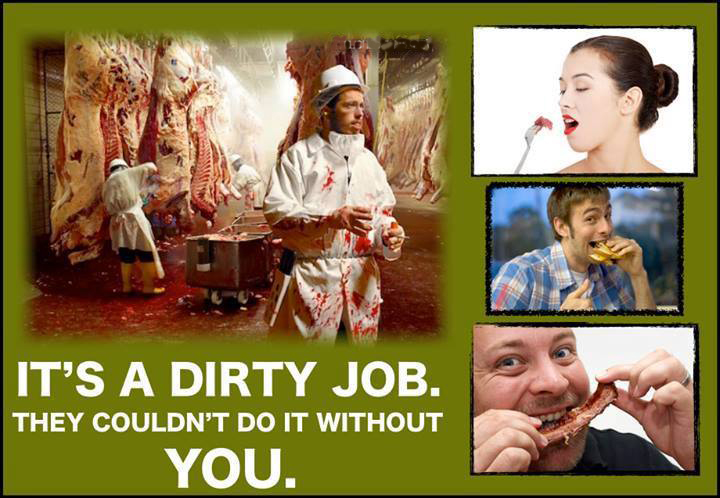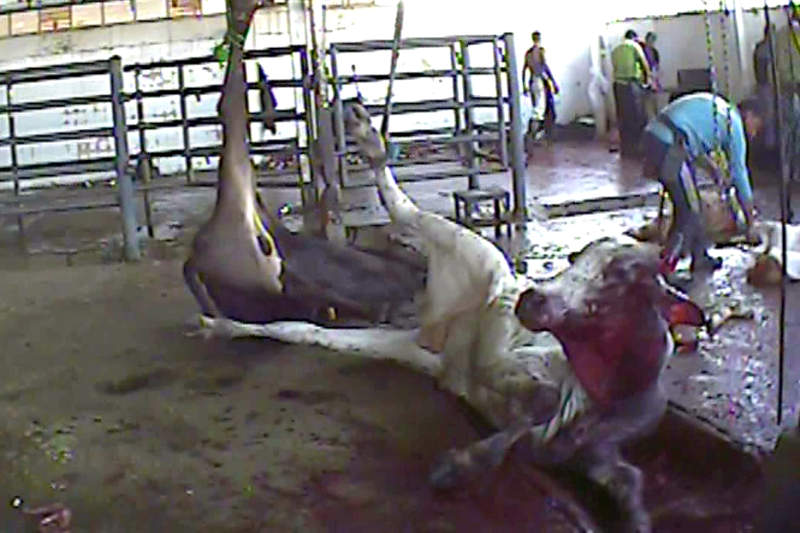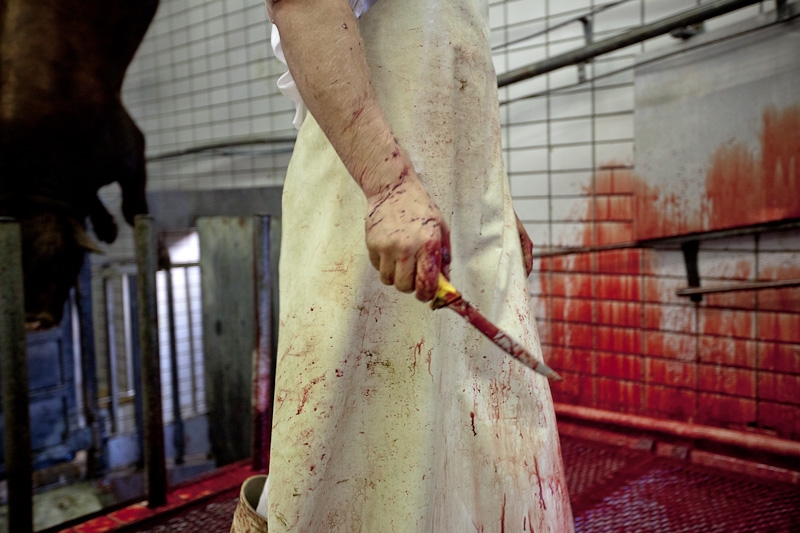Myth #38: “But the meat & dairy industry provides jobs.”
If you accept the official figures*, about 40,000 meatpacking workers are killed or injured on the job every year in the United States alone. And yet those figures are probably significantly low — due to the meat industry having a well-documented history of discouraging injury reports, falsifying injury data, and putting injured workers back on the job to minimize the reporting of lost workdays.
Just as disconcerting is the immense psychological damage suffered by all slaughterhouses workers. While the meat & dairy consumer is conveniently disconnected from the immense pain & suffering that takes place in the production of meat and eggs and dairy products, workers in the world’s slaughterhouses, chick processing plants and dairy farms are continually immersed in that violence — acts of terrible cruelty committed over & over & over again by their own hands. The drastic psychological & emotional consequences that ensue cannot come as much of a surprise …
*A study performed at the University of Windsor showed that slaughterhouse workers are increasingly reporting symptoms of PTSD — including extreme anxiety, domestic violence, drug and alcohol abuse and social withdrawal.
*In 2007, Amy Fitzgerald (a University of Windsor criminology professor) released a study that proved a strong correlation between the presence of large slaughterhouses and high crime rates in U.S. communities. She controlled for a slaughterhouse town’s typically disproportionate population of poor, working-class males, and still found that the presence of the abattoir stood out as the factor most likely to spike a community’s crime statistics.
*An Australian study released in 2013 (and published in the Society & Animals Journal) also found that slaughterhouse workers are more prone to violence, finding that people who work in abattoirs are far more likely to be desensitized to suffering, which in turn makes them more likely to be violent towards their fellow humans.
*Flinders University senior sociology lecturer Dr Nik Taylor also found that the more positive a person’s attitude towards animals, the lower their aggression levels, and that the reverse is also true – namely, that if one is cruel towards animals, he or she is more likely to be violent towards other humans. In her particular study, Taylor found that slaughterhouse workers’ aggression levels were so high that they actually mirrored those exhibited by the long-term incarcerated.
So yes, the meat & dairy industry does provide a lot of jobs … Then again, so did the Nazi concentration camps during World War II … Think about it.
Current status of this Myth: Unveiled
Justification it provides for eating animals: NONE
* The rate of cumulative trauma injuries in meatpacking is the highest of any American industry. It is about 33 times higher than the national average. Even the Bureau of Labor Statistics admits that meatpacking is the nation’s most dangerous occupation. Indeed, in 1999 alone, more than one-quarter of America’s nearly 150,000 meatpacking workers suffered a job-related injury. And though some progress in worker safety has been made since then, the meatpacking industry still has by far not only has the highest injury rate, but also has the highest rate of serious injury – more than five times the national average. It’s no wonder that meatpacking is currently not only one of the nation’s lowest-paid industrial jobs, but also has one of the highest job-turnover rates.










 ;
;